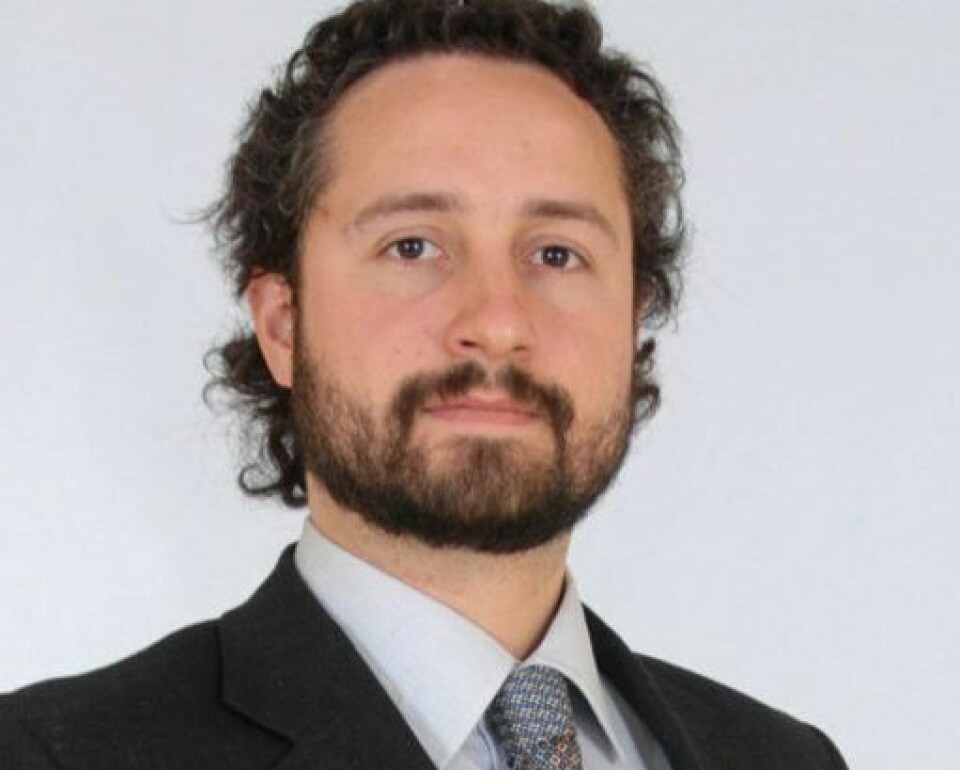
Oxygen 'normal' at sunken fish farm site, says Blumar
Dissolved oxygen and oxygen saturation near the seabed of the site where a Chilean salmon farm sank remain at normal levels, monitoring carried out for the farm’s owner shows.
Salmon farmer Blumar has reported the results of the oceanographic missions carried out last month within the framework of a Comprehensive Monitoring Plan ordered by authorities.
Sixteen cages and 771,000 dead salmon are lying on the seabed nearly 1,000 feet below the surface following the collapse of Blumar’s Caicura farm in heavy seas on June 27.
Dead areas

In August, Cristóbal de la Maza, head of the Superintendency of the Environment (SMA), told Fish Farming Expert’s Chilean sister site, Salmonexpert.cl, that oxygen levels could be reduced by bacterial decomposition of the dead fish, potentially forming dead areas that could cause mortality in other salmon farms in the area.
But he also pointed that as the Caicura mortalities were so deep that “the pressure levels of the water column on the biomass can help a lot to maintain this encapsulated effect”.
To date, eight of 11 monitoring exercises outlined in the official plan have been carried out, four of which have already been delivered in a previous report. Each exercise encompasses the monitoring and analysis of more than 21 physical and chemical variables in the water column, on the seabed and in the coastal environment.
Slow degredation
Blumar’s report states that both dissolved oxygen and oxygen saturation remain high on the surface, “due to the beginning of spring, which is normal for this time of year in the area. Meanwhile, near the bottom, the concentrations are also normal, which is a sign of the slow degradation of the biomass found inside the sunken cages”.
“Likewise, as in the last report, the presence of harmful microalgae was scarce,” stated Blumar. “This variable was also analysed in mussel samples, which were not positive for this toxin either.
“One of the aspects that has evolved positively during the campaigns is the change in roughness of the sea surface over the area of the sinking, which was detected since the beginning of August and reported to the Authority. Both the smell and the presence of birds in the sector have decreased, however, daily monitoring will be maintained in that sector.”
Organic carbon

Blumar said an increase in organic carbon in the seabed had been detected in monitoring stations close to the area of the sinking “that have registered values that have fluctuated between 5.7% and 7%”. This was to be expected considering the degradation of the biomass that remained encapsulated at 295 metres deep in the nets and cages of the farm.
“In general, an organic carbon content in sediments below 5% indicates low levels of organic enrichment, while values between 5-15% suggest a moderate to high degree of enrichment,” explained Iván Pérez-Santos, lead scientist for the study by the I-mar Centre of the University of Los Lagos.
“The highest degree of organic matter is produced in the monitoring stations closest to the sinking. Meanwhile, in the control stations the values were below 5%.”
Hundreds of measurements
The oceanographic monitoring exercises that are being developed also consider the study of invertebrates, birds and mammals and their interaction with the environment after the sinking. “So far, none of the observations have recorded mortalities of these organisms in environments such as intertidal and subtidal,” said Blumar.
“More than half of the comprehensive oceanographic campaigns required by the authority have already been carried out and hundreds of physical and chemical measurements have been carried out, which have shown that, to date, there are no significant environmental variations in the main variables. However, we must continue to measure rigorously and inform the community,” said Blumar area manager Pedro Pablo Laporte.
Farm hasn’t moved
Blumar said that in addition to the Comprehensive Monitoring Plan, it reports daily measurements of salinity, pH, dissolved oxygen, temperature and hydrogen sulphide to the sector authorities, as long as the weather conditions allow it.
“It is important to point out that during the last month the presence of the latter has not been detected,” said the company.
Blumar also pointed out that it used a ROV Seabotix 300 underwater robot to inspect the status of the sunken farm on a weekly basis.
“Thanks to this work, it is known that the modules have not moved from their original position and that the biomass is encapsulated within the nets and cages,” said Blumar.






















































